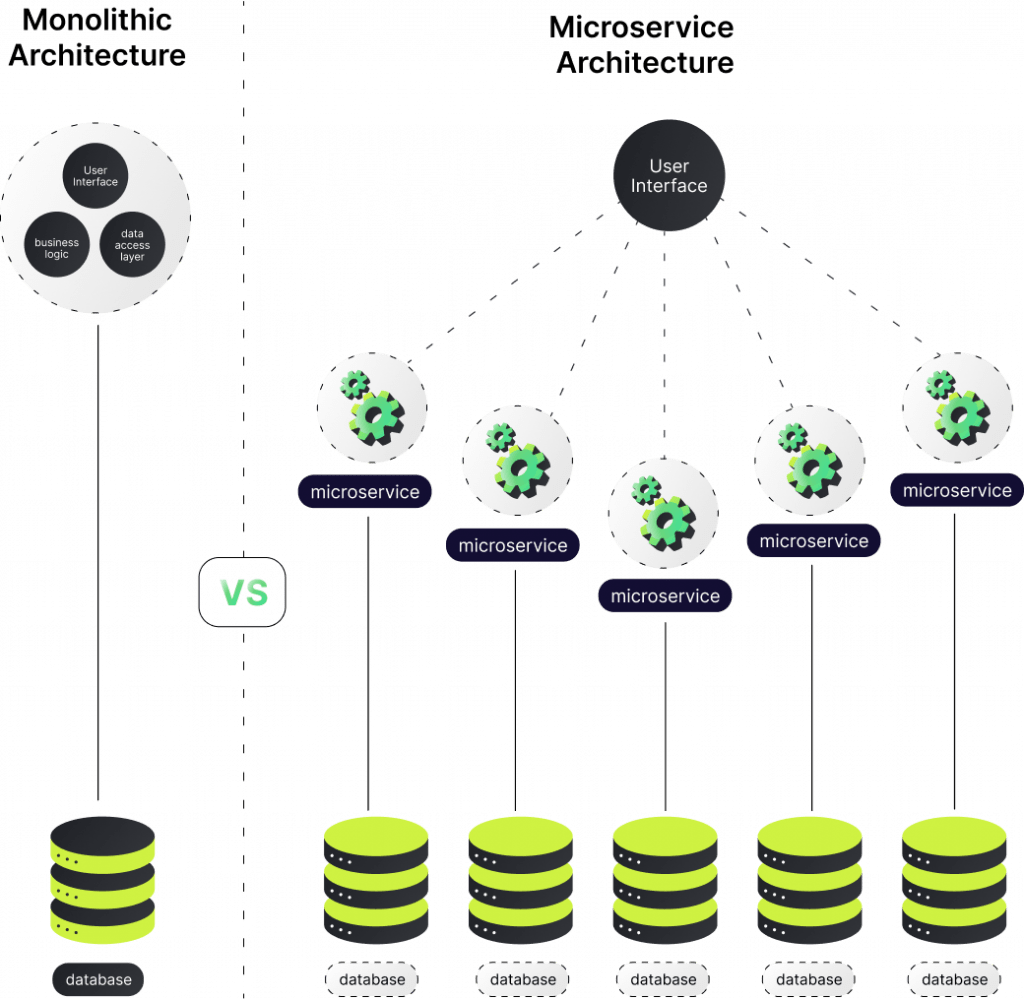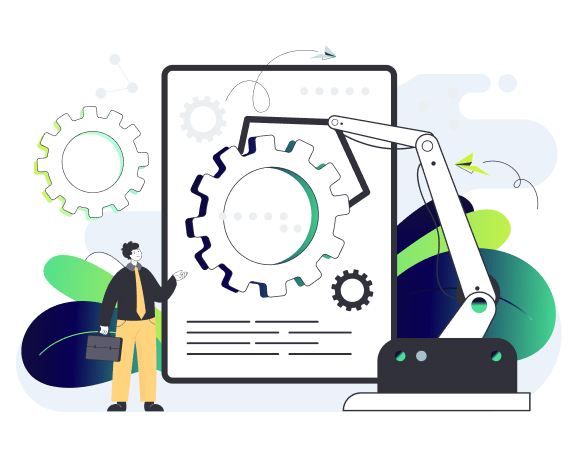Why is Automated Microservices Testing Important?

Introduction
Microservices are a popular architectural style for building modern applications that are scalable, resilient, and adaptable. Instead of developing single, monolithic applications, we have seen the advent of microservices that break down functionality into smaller, independent services that communicate with each other through well-defined interfaces.
Microservices offer many benefits over monolithic architecture. These benefits include faster and easier development, improved fault tolerance, and better overall performance. Although the sun is shining, clouds can be seen looming in the distance. That is because although microservices are great, it can introduce new challenges and complexity, especially when it comes to testing them.
Microservices testing is not the same as testing a monolithic application. Microservices might have multiple dependencies, configurations, and interactions that need to be verified and validated between one another. Moreover, microservices need to be tested across different levels of granularity, as well. This can range from individual microservices to the entire end-to-end system. This is why automated software testing is essential for the development and delivery of microservices. Automated testing can help achieve faster feedback, reduce human error, and facilitate continuous delivery. In this blog post, we will discuss different types of tests, best practices and strategies for automated testing of microservices, and tools that can help expedite the testing process.
Different Types of Tests for Microservices
Microservices automation testing will include taking advantage of a collection of different types of tests that cover different aspects and levels of the system. Some of you might be familiar with some of these types of tests already, but some of the common types of tests utilized when testing microservices include:
- Unit Tests: These are basic tests and are the most granular. They verify the functionality and behavior of individual components or units of code. Unit tests are usually written by developers and are sometimes the first line of defense against issues, errors, and bugs that might be present in the application.
- Component Tests: These are tests that check the functionality and integration of a single service or possibly a group of related services. Component tests are more comprehensive than unit tests because they involve testing the service’s interfaces, dependencies, data, and different configurations.
- Integration Tests: These tests verify the communication between multiple services. Integration tests ensure that these services work together as expected and handle errors as they should, preferably gracefully. Should the services fail to communicate with one another, the entire application would be fatally flawed.
- Contract Tests: These are tests that validate the contracts or agreements between services. Contracts define the expectations and obligations that each service might have. This might include input, output, formatting, and overall behavior. Contract tests help avoid breaking changes and ensure that the services are compatible with one another.
- End-to-End Tests: These are tests that simulate the user’s journey. It also considers the user’s experience with the entire application or system. These are key to checking both system functionality and performance as well as validating the usability of the system, all from the user’s perspective.

Benefits of Automated Microservices Testing
Automated testing is the process of executing tests – often in the form of scripts – that verify and validate results without human intervention. There are also tools out there on the market that are meant to help with automated testing. Automated testing has many advantages over manual testing, especially in the context of testing microservices. Some of the benefits of automated testing include:
- Faster Feedback: Automated testing can run faster and more frequently than manual testing. This gives the testers and developers immediate and continuous feedback. Furthermore, it helps identify and fix bugs earlier on in the software development lifecycle (SDLC). Ultimately, it aims to improve quality and reduce rework.
- Reduced Human Error: Automated testing can remove the human part of the equation, thus reducing or eliminating human errors and inconsistencies. These errors and inconsistencies are often found throughout manual testing and can include typos, oversights, and general fatigue. This helps ensure accurate, reliable, and repeatable tests and results.
- Facilitated Continuous Delivery: Automated testing can enable continuous delivery or the practice of delivering software updates to users in small and frequent increments. Continuous delivery often requires a high degree and level of automation. This helps to reduce risks, increase efficiency, and get your product on the market faster.
Although automated microservices testing seems to have all the bells and whistles, it’s not a silver bullet, though. It has some challenges and limitations that come along with it, such as initial cost, maintenance, the learning curve that comes with automation (even using a tool), and can have a high degree of complexity depending on the given scenario, use case, or industry. On that note, it’s important to balance the trade-offs and choose the right tool or type of automation for your requirements and needs.

Best Practices for Automating Microservices Testing
Automating microservices testing is not a one-size-fits-all approach. It often requires careful planning, execution, and evaluation. Following some best practices and strategies can help and go a long way, here are some to think about:
- Handle Dependencies: Microservices have many dependencies. These can be other services, databases, and APIs, among other things. These dependencies can often affect the test results and cause failures or delays. As such, it’s important to handle the dependencies properly, such as using techniques like mocking, stubbing, or service virtualization, etc.
- Test Different Configurations: Microservices can run in different environments, like development, staging, production, etc. These environments often have different configurations, data, and resources, all of which can impact both the behavior and performance of the microservices. Therefore, it’s important to test the services in different setups.
- Prioritizing Test Coverage and Maintenance: It’s crucial to prioritize test coverage to focus automation efforts on critical functionalities. Conducting risk analysis and identifying high-priority test scenarios helps in allocating resources effectively. Additionally, maintaining automated tests is essential for their long-term effectiveness. Regularly review and update tests to accommodate changes in requirements, user interface, or underlying code.
How Qyrus Helps in Automating Microservices Testing
Qyrus is a simple, smart, and scalable platform that covers all your testing needs. We can test end-to-end business processes, web applications, mobile applications, and APIs. What’s more is that Qyrus is there to help automate the testing of your microservices. Qyrus can help in in different ways such as:
- Supporting the testing of REST, SOAP, and GraphQL APIs, all with a codeless approach that also goes for testing web apps and mobile apps. You can easily build and create test scripts, execute them, and manage these test scripts on one platform. Furthermore, test the functionality of your APIs as well as their performance using Qyrus’ intuitive interface and supporting features.
- Handling all of the infrastructure needs, as well. Test your services and apps on different browsers, devices, and operating systems using Qyrus’ cloud-based browser and device farms. Execute your tests in parallel, as well, cutting down test execution time and getting results back faster.
- Integrating seamlessly with all CI/CD platforms as well as other tools for things like defect management, test case management, and collaborative tools. Qyrus also comes shipped with its own test case management and test data management tools and features to help with collaboration.
- Read about our success story with Waste Management and how we’ve helped facilitate their API testing which has prevented any bugs from being introduced into production over a 24-month period. This client tests over 400+ endpoints running 4500+ tests in less than 5 minutes, all done through their CI/CD integration.
- Providing real-time test reports, analytics, and insights to help you monitor and improve your testing processes and outcomes. You can also collaborate with your testing teams and stakeholders using Qyrus’ communication and notification features.
Qyrus is a next-generation testing platform infused with AI that combines the power of open-source frameworks with the simplicity of codeless testing. Qyrus can help you automate microservices testing faster and more efficiently. With Qyrus, deliver value to your customers sooner! If you want to try out Qyrus for yourself, you can sign up for a free trial or contact us for a custom solution today!
Conclusion
Microservices are a powerful way to build modern applications that are scalable, resilient, and adaptable. However, microservices also require a different approach to testing when compared to testing traditional monolithic applications, one that is more comprehensive, rigorous, and automated. Automated software testing is vital for the development and delivery of microservices. It can help achieve faster feedback, reduce human error, and facilitate continuous delivery.
To automate microservices testing, we need to use the right tools and frameworks, such as Qyrus! By automating software testing for microservices, we can ensure the quality, reliability, and functionality of our applications. We can deliver value to our customers faster and much more efficiently. If you want to learn more about automated testing, feel free to check out some more of our blog posts. To get to know more about Qyrus specifically, check out our Feature Friday series or contact us today!





